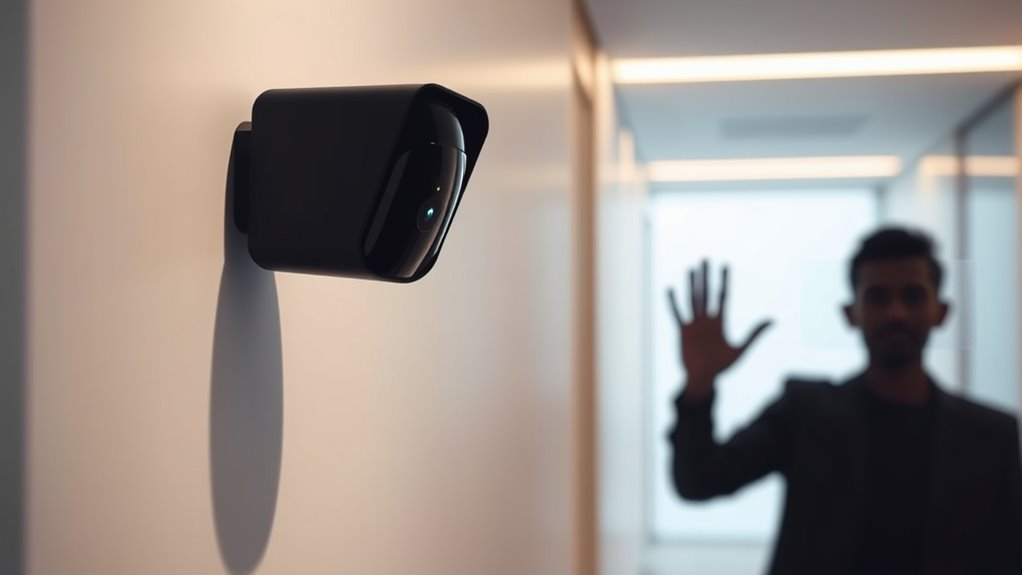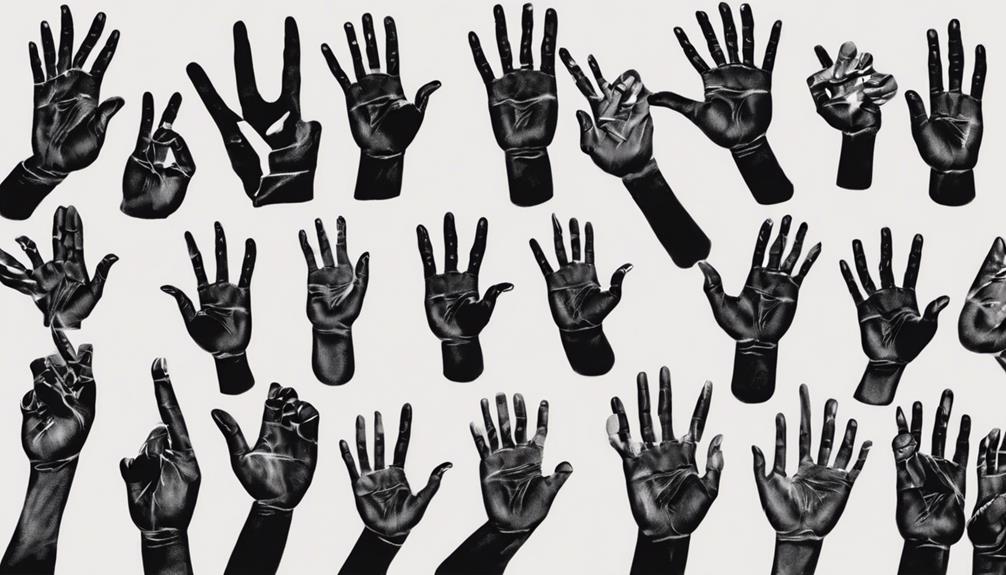As you explore gesture recognition cameras, you’ll find that advancements boost accuracy by using better sensors and algorithms, providing more reliable and responsive systems. However, this precision comes with privacy concerns, like data breaches and lack of transparency about collection. To balance these trade-offs, it’s essential to prioritize security, clear policies, and user consent. Continuing will reveal how developers and regulators are working to protect your privacy while maintaining cutting-edge performance.
Key Takeaways
- High-precision gesture recognition requires detailed data collection, which can increase privacy risks if not properly secured.
- Advanced sensors and algorithms improve accuracy but often necessitate more invasive data collection methods.
- Balancing user privacy with the need for transparency and consent is essential to prevent misuse of gesture data.
- Implementing privacy-preserving techniques can help maintain accuracy while protecting sensitive user information.
- Clear regulations and ethical standards are crucial to ensure that increased accuracy does not compromise user privacy rights.
The Evolution of Gesture Recognition Technology

The evolution of gesture recognition technology has been driven by rapid advances in sensors, processing power, and machine learning algorithms. As sensors improve, calibration becomes more precise, enabling your devices to better interpret subtle movements. Early systems struggled with inconsistent readings, but now, enhanced sensor calibration ensures more reliable data. At the same time, algorithm accuracy has skyrocketed, allowing your systems to distinguish gestures accurately even in noisy environments. Sensor calibration plays a crucial role in maintaining the high performance of these systems, ensuring consistent and accurate detection. Improved processing power means faster response times, making interactions feel more natural. These innovations have transformed gesture recognition from basic motion detection to sophisticated, high-precision systems. As a result, your devices can now understand complex gestures, paving the way for more intuitive and responsive user experiences.
Benefits of High-Precision Detection
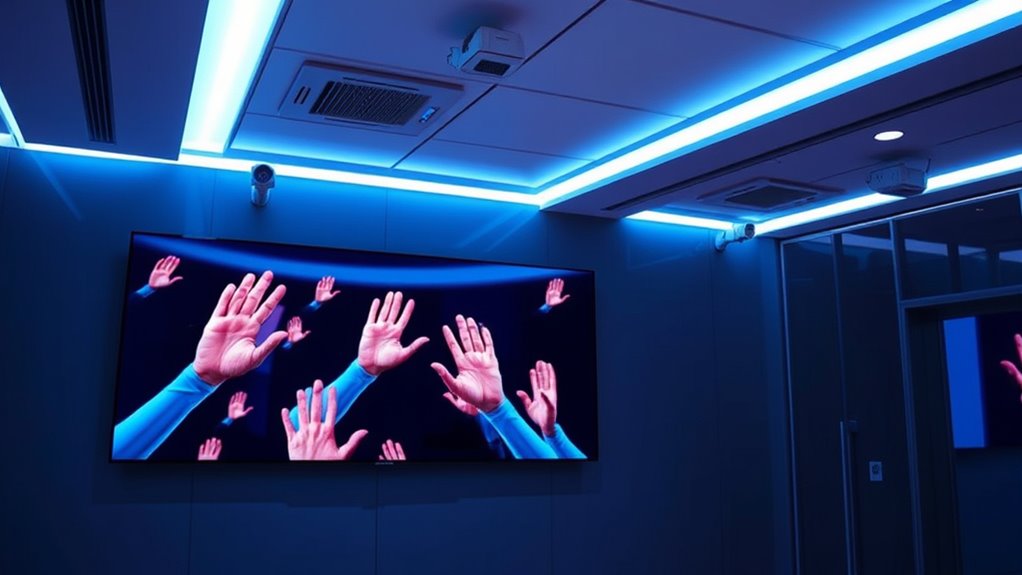
High-precision detection substantially enhances the accuracy and reliability of gesture recognition systems, making interactions smoother and more intuitive. When detection is precise, your user experience improves because the system responds quickly and correctly to your gestures, reducing frustration. This level of accuracy also offers significant accessibility benefits, as it allows users with limited mobility or unique gestures to interact effectively with technology. High-precision sensors minimize errors caused by background noise or environmental factors, ensuring consistent performance across various settings. As a result, users feel more confident and engaged, knowing their commands are accurately interpreted. Incorporating advanced sensor technology further improves system robustness and performance. Overall, high-precision detection not only boosts system performance but also promotes inclusivity, making gesture-based interfaces more accessible and user-friendly for everyone.
Privacy Challenges and Risks
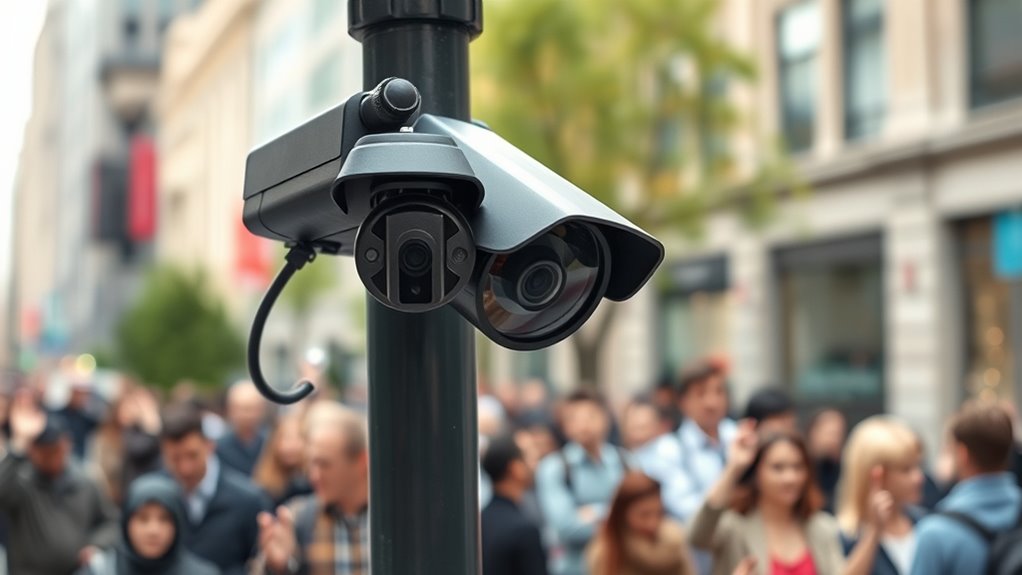
As gesture recognition cameras become more widespread, concerns about privacy risks grow louder. You risk exposing sensitive data through data breaches, which can happen if stored gesture data isn’t properly protected. Additionally, users often aren’t fully aware of how their gestures are recorded and used, raising issues around user consent. Without clear consent, your privacy can be compromised. Below is a table highlighting key risks:
| Privacy Challenge | Impact |
|---|---|
| Data breaches | Unauthorized access to personal data |
| Lack of transparency | Users unaware of data collection |
| Insufficient security measures | Increased vulnerability to hacking |
| Unclear user consent | Unintentional data sharing |
| Data misuse or abuse | Unauthorized use of gesture data |
Protecting privacy requires awareness and safeguards to prevent these risks. Understanding privacy is essential for developing effective protective strategies.
Regulatory and Ethical Considerations
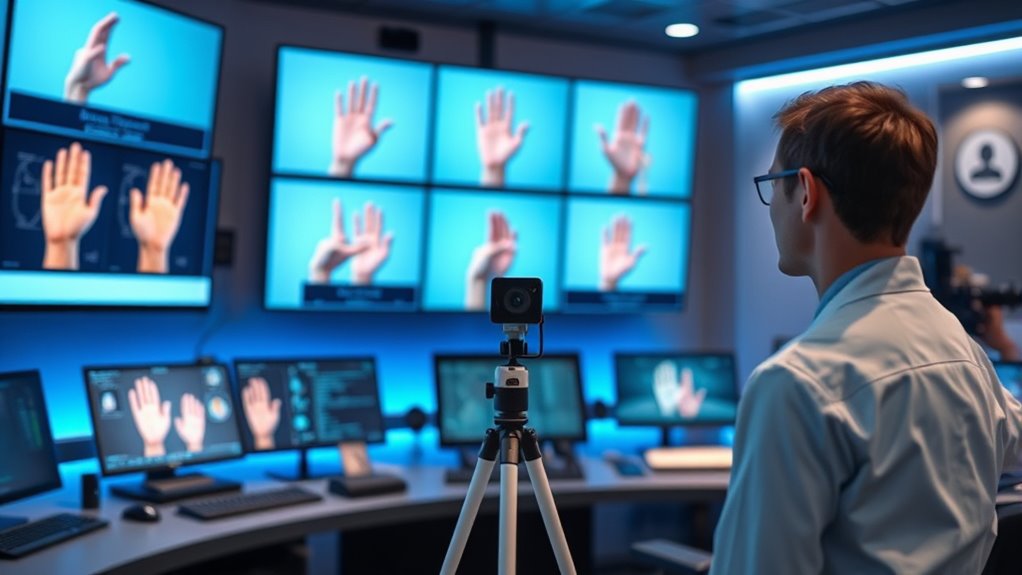
With privacy risks mounting, establishing clear regulatory and ethical frameworks becomes vital for responsible gesture recognition camera deployment. You need to guarantee legal compliance by adhering to data protection laws and obtaining proper user consent. Addressing ethical dilemmas involves balancing technological benefits with respect for individual autonomy and privacy rights. Developers and organizations must create transparent policies that specify how data is collected, stored, and used. Without these frameworks, you risk misuse, discrimination, and erosion of trust. Implementing strict standards helps prevent abuse and promotes responsible innovation. Ultimately, balancing innovation with accountability ensures that gesture recognition technology serves society without compromising fundamental rights. Establishing these guidelines fosters trust and demonstrates your commitment to ethical and lawful practices. Incorporating fraud prevention tools and techniques can further safeguard user data and maintain integrity in deployment.
Striking a Balance: Future Directions
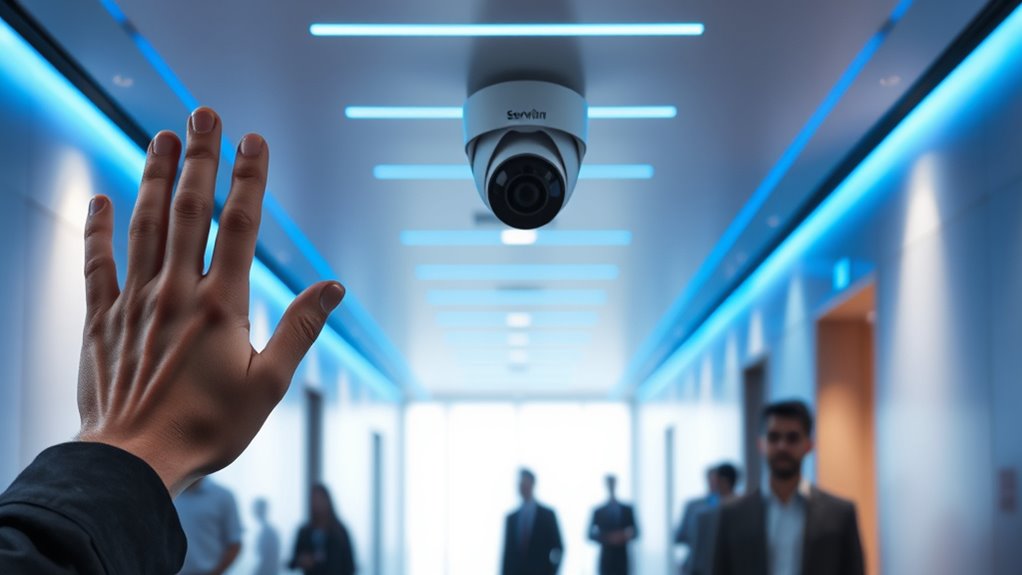
Balancing technological innovation with ethical responsibility is essential as gesture recognition cameras become more integrated into daily life. Moving forward, you’ll need to prioritize data privacy by implementing robust security measures and transparent policies that protect user information. Ensuring user consent is central; you should design systems that clearly inform users about data collection and provide easy options to opt out. Future developments must focus on creating privacy-preserving algorithms that minimize data exposure without sacrificing accuracy. Collaboration between developers, policymakers, and users will be *pivotal* to establish standards that safeguard individual rights while enabling technological progress. By proactively addressing these concerns, you can foster trust and promote responsible adoption of gesture recognition technology, aligning innovation with societal values.
Frequently Asked Questions
How Do Gesture Recognition Cameras Perform in Low-Light Environments?
In low-light environments, gesture recognition cameras often struggle, but infrared sensing helps improve their performance. Infrared sensors enable the camera to detect gestures even in darkness, while image enhancement techniques clarify visuals. You’ll find that these features allow for more reliable gesture detection without needing additional lighting. So, despite the challenging conditions, infrared sensing and image enhancement work together to boost accuracy, ensuring your gestures are recognized even in dim settings.
Can Gesture Data Be Securely Stored and Transmitted?
You can guarantee your gesture data is securely stored and transmitted by using strong encryption protocols, which protect information from unauthorized access. Additionally, implementing data anonymization techniques helps remove identifiable details, safeguarding your privacy. By combining encryption and anonymization, you minimize risks during storage and transmission, making sure your gesture data stays confidential and secure throughout the process.
What Are the Costs Associated With Implementing High-Accuracy Systems?
Implementing high-accuracy gesture recognition systems involves significant cost implications. You’ll need to invest in advanced hardware and sophisticated software, which can be expensive. Additionally, the infrastructure requirements, such as powerful servers and secure networks, add to the costs. You should also consider ongoing maintenance and upgrades. Overall, while these systems boost precision, they demand a considerable financial commitment upfront and over time.
How Do Different Countries Regulate Privacy in Gesture Recognition Technology?
You should know that countries regulate privacy in gesture recognition technology through various legal frameworks, which often reflect their cultural differences. Some nations impose strict data protection laws, requiring user consent and transparency, while others adopt a more relaxed approach. These regulations aim to balance innovation with privacy concerns, but how they’re enforced varies widely. As a user, staying informed about your country’s legal stance helps protect your personal data.
Are There Alternative Methods to Achieve Gesture Recognition Without Compromising Privacy?
You can explore privacy-preserving techniques like edge computing, which processes data locally, reducing exposure. Using alternative sensing methods such as radar or ultrasonic sensors also helps, as they don’t capture detailed images or videos. These approaches enable gesture recognition without compromising privacy, giving you accurate results while respecting user confidentiality. Implementing such methods allows you to balance the need for functionality with safeguarding personal data effectively.
Conclusion
You might think better accuracy in gesture recognition means more convenience, but it often comes at the expense of your privacy. Ironically, the very tools designed to make interactions seamless could leave your personal data more exposed than ever. So, as you embrace smarter cameras, remember: in the quest for perfect detection, safeguarding your privacy might just become the ultimate challenge. Sometimes, the pursuit of progress ironically leaves you more vulnerable than ever before.

